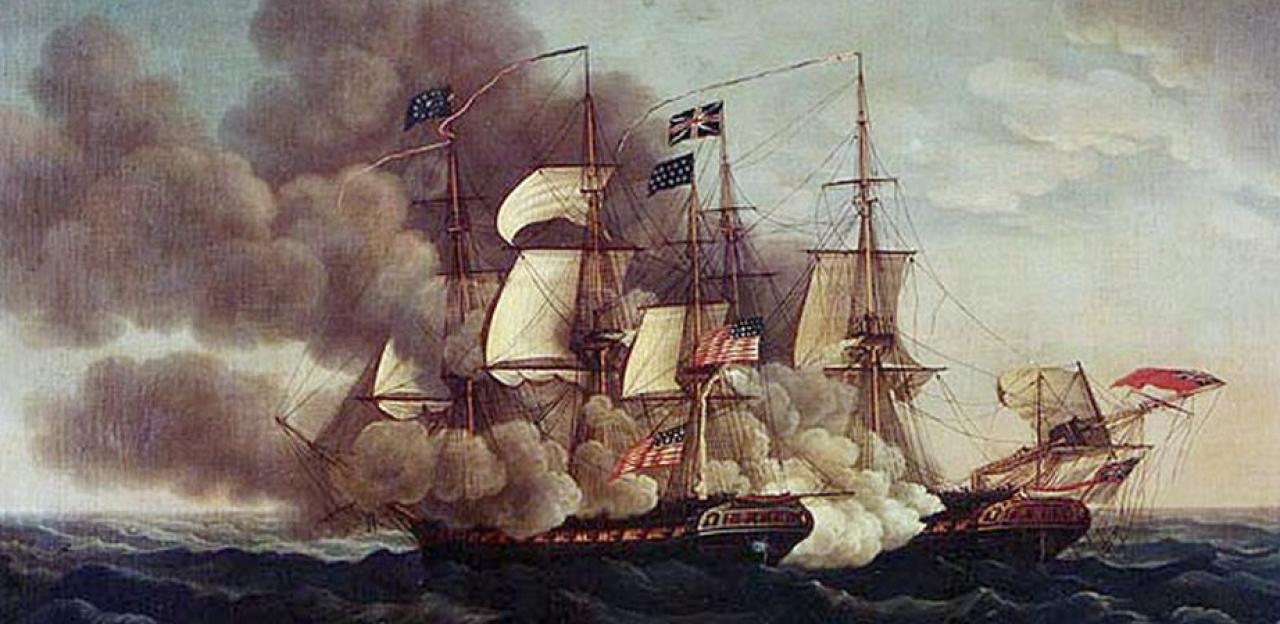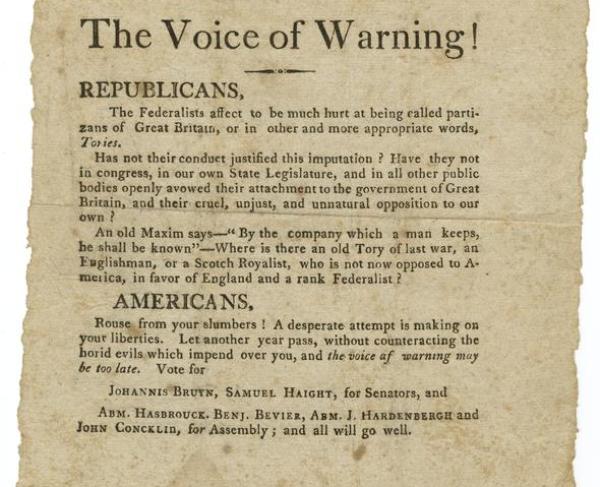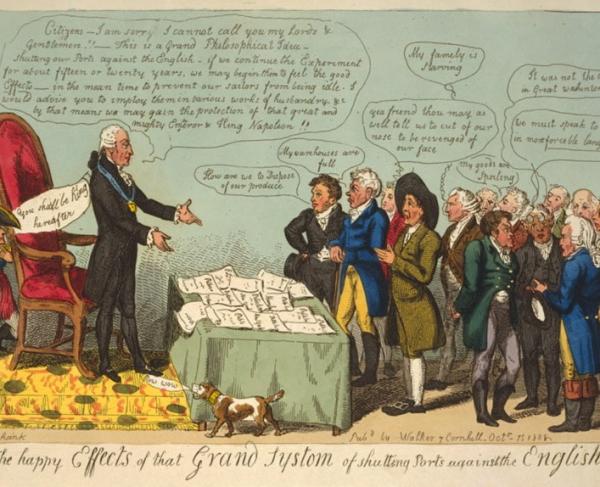The Militia of the Sea

While uncommon in the modern era, during the American Revolution and the War of 1812 the United States relied heavily on privateering, which was commonly referred to as “the militia of the sea.” In general, the term privateer refers to a privately-owned ship or sailor commissioned by a government to raid an enemy’s military and merchant shipping. Although controversial, there is a long history of privateering that dates back to the seventeenth century. The main difference between pirates and privateers is that privateers are commissioned by a specific government and can only attack ships that fly under an enemy flag, while pirates are not sanctioned by any government and can attack whomever they choose. While pirates keep the prizes themselves, privateers only receive a portion of the money generated from the sale of prizes, which is heavily taxed. Prizes refer to goods seized from a merchant or military ship. While both economically lucrative, privateers serve as a vehicle of war, pirates do not. Despite the controversy, the United States used privateering to supplement their small naval force during the American Revolution and the War of 1812.
Even before the United States declared itself independent from Great Britain the Continental Army began utilizing privateers to undermine British commerce and support the war effort. By the end of the summer of 1775, General George Washington began converting schooners to prey on British supply ships heading to Boston to apply pressure on the British and gain some thoroughly needed supplies. Washington called these vessels privateers; however, that was technically inaccurate as they were not commissioned by the Continental Congress and thus were essentially pirates under international law. Nevertheless, the American public embraced the idea and called this little fleet of pirates “Washington’s Navy” and by the end of 1775, seven ships comprised “Washington’s Navy.” Individual colonies commissioned their own privateers to seize British cargo, but it wasn’t until March 1776 that the Continental Congress legalized privateers and began issuing commissions. Early privateers sailed on small vessels that normally carried no more than six guns and had a crew of about twenty-five; however, as the war progressed and the Continental Navy dwindled, the scale of privateering grew. By the summer of 1781, the American fleet of privateers numbered in the hundreds, and many privateers were skilled seamen. In the American Revolution, privateers transported arms, munitions and tropical products to the American continent. Privateers became a weapon in the fight for independence.
Following the American Revolution, many former privateers became captains on merchant ships, because without war, privateering was no longer needed on such a large scale. Maintaining a large standing navy proved to be an expensive endeavor, which also carried with it political intrigue and ramifications. During his term as President, President Thomas Jefferson made deep cuts to the United States Navy. In the build up to the War of 1812, the United States increasingly relied on privateering for naval protection. Privateering proved to be lucrative for the United States as they taxed prizes between 30-40%. From the beginning of the War of 1812 Congress did not want to encourage a naval war with Great Britain as they believed it to be expensive and would ultimately fail against Britain’s notoriously strong naval force. Thus, Congress adopted privateering as their main naval strategy, while maintaining a small navy. By the end of the war, Congress commissioned over 525 private ships to be privateers, which captured thousands of British vessels and millions of dollars in prizes. In the War of 1812, privateering was crucial to alleviating the trade imbalance by providing the United States with much needed goods, both for civilians and for the military.
To foster privateering Congress passed laws that expedited the sale of prize goods, lowered some of the taxes on prized good, set up a pension fund for privateers wounded in action, and authorized a bounty payment equal to half the value of each vessel destroyed. In addition to these incentives which inspired profit, many seamen in both wars chose to pursue privateering instead of enlisting in the navy because the term of service was shorter (two to three months instead of a year) and because of the reduced risk of armed engagement. Privateers did not wish to engage in combat and would try to flee British ships, if that failed they would often surrender. In both wars, though small, the Navy attempted to compete with privateers for recruits and ultimately fell short, which resulted in conscription and impressment.
Despite British attempts to discourage privateering, privateers in both wars achieved great success in harassing British commerce and bolstering the American economy. The British refused to parole or exchange any prisoner from a privateer that maned less than fourteen guns. The British treated privateers, who made up a bulk of prisoners of war, very harshly to discourage privateering and encourage enlistment in the Royal Navy. British vessels traveling across the Atlantic were required to travel with an escort or in convoy. Consequently, American privateers often patrolled the waters of the British Isles and the West Indies, thus carrying war into British waters. These patrolling locations were made possible by the French, who allowed American privateers to dock in French waters.
The distinction between piracy and privateering remains small and some privateers engaged in privateering solely for profit. Yet, for some American privateers privateering represented a way to express one’s patriotism in service to one’s country. In the formidable years of this country, privateering became an essential core of the United States’ naval force and served as a tool to gain and subsequently protect its independence from Great Britain.


